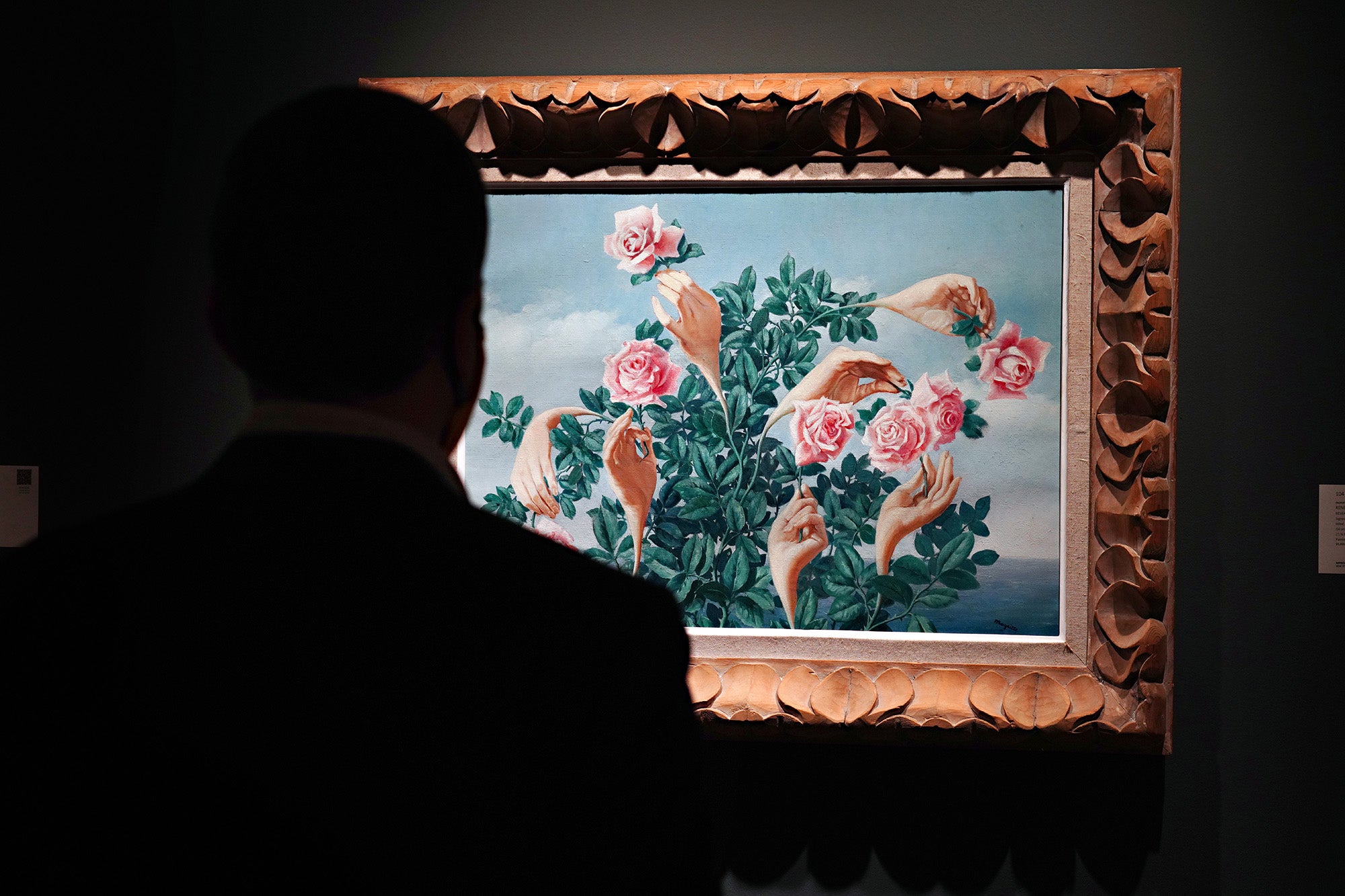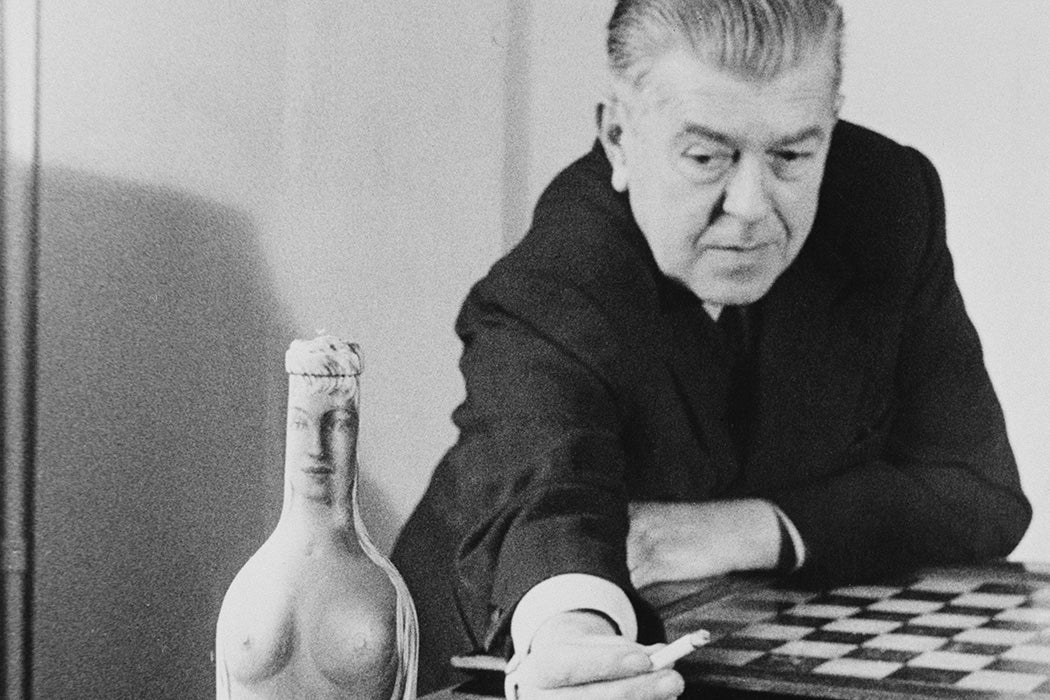Toward the end of his life, René Magritte seldom left his quiet Brussels home. But the famed Belgian Surrealist was coaxed to the United States—for the first and only time—in December 1965 by a monumental retrospective of his career at the Museum of Modern Art in New York. In the midst of Pop’s dominance in the American cultural milieu, this reevaluation of Magritte’s corpus came as prominent critics and artists began professing him as their greatest forebear.
“Do the Pop artists claim me?” Magritte asked with mock surprise. “Excuse me, but I think Pop is window dressing, advertising art.”
Magritte took issue less with the undeniable visual link between Pop and his own paintings—disjunctive, saturated (sur)realities—than with what he considered to be the movement’s “sugar-coated” recycling of Dadaist principles. According to the Belgian conceptual artist Marcel Broodthaers, Pop indeed evoked Duchamp’s witty representations of everyday “thingliness.”
“There is a label for these Americans who fly in the face of harmony and good taste. Pop art, it’s called,” proclaims Broodthaers. “All these artists continue to work on the road to hell that was begun by dada… Very well then, long live dada, long live dadapop…”
Though the Dadaists began their assault on aesthetics fifty years earlier, “we cannot look to them, or to Max Ernst, for [Pop’s] original source,” asserts Brooadthaers. “Let us rather look to René Magritte…who certainly influenced and determined the course of this entire artistic movement now flourishing in New York.”

Despite Magritte’s repeated disownment of Pop, his visual idiom became a common reference point when articulating the development and ambitions of the new movement in the 1960s. The rediscovery of his work engendered by the MoMA show and a string of other museum exhibitions was, at first, largely apolitical. More closely associating Magritte’s iconic dream imagery with the banal than the surreal, new histories of twentieth century art wove an anti-aesthetic thread between Dada, Surrealism, and Pop. This alternative lineage eluded the dominant stylistic narratives of Modernism that traced a gradual flattening of the picture plane from Impressionism to Cubism, culminating in Abstract Expressionism.
As art historian Sandra Zalman points out, however, Magritte’s uncanny depictions of suited men and everyday commodities became reinterpreted as subversive symbols of conventional bourgeois existence. These readings were reinforced by the Surrealist’s own leftist commitments as a longtime Marxist thinker and, by 1945, a full-fledged member of the Belgian Communist Party. Seemingly taking aim at middle-class normalcy, Magritte’s imagery became hard to square with his conspicuously bourgeois appearance, characterized by his signature bowler hat and dark suit.
Weekly Newsletter
According to Zalman, Magritte’s persona in Cold War America evolved into that of a “secret agent” who, like his paintings, mimicked bourgeois norms in order to subtly undermine them. His supposedly subversive agenda led to a proliferation of sociopolitical accounts of Surrealism—and, in turn, Pop, as the two became united by their criticisms of consumer culture.
“Magritte’s relevance for contemporary art had been founded on [aesthetic] connections,” Zalman reminds us, “but the secret agency of Surrealism” clandestinely positioned Magritte’s approach as Pop’s conceptual and political backbone as well.
Support JSTOR Daily! Join our new membership program on Patreon today.







